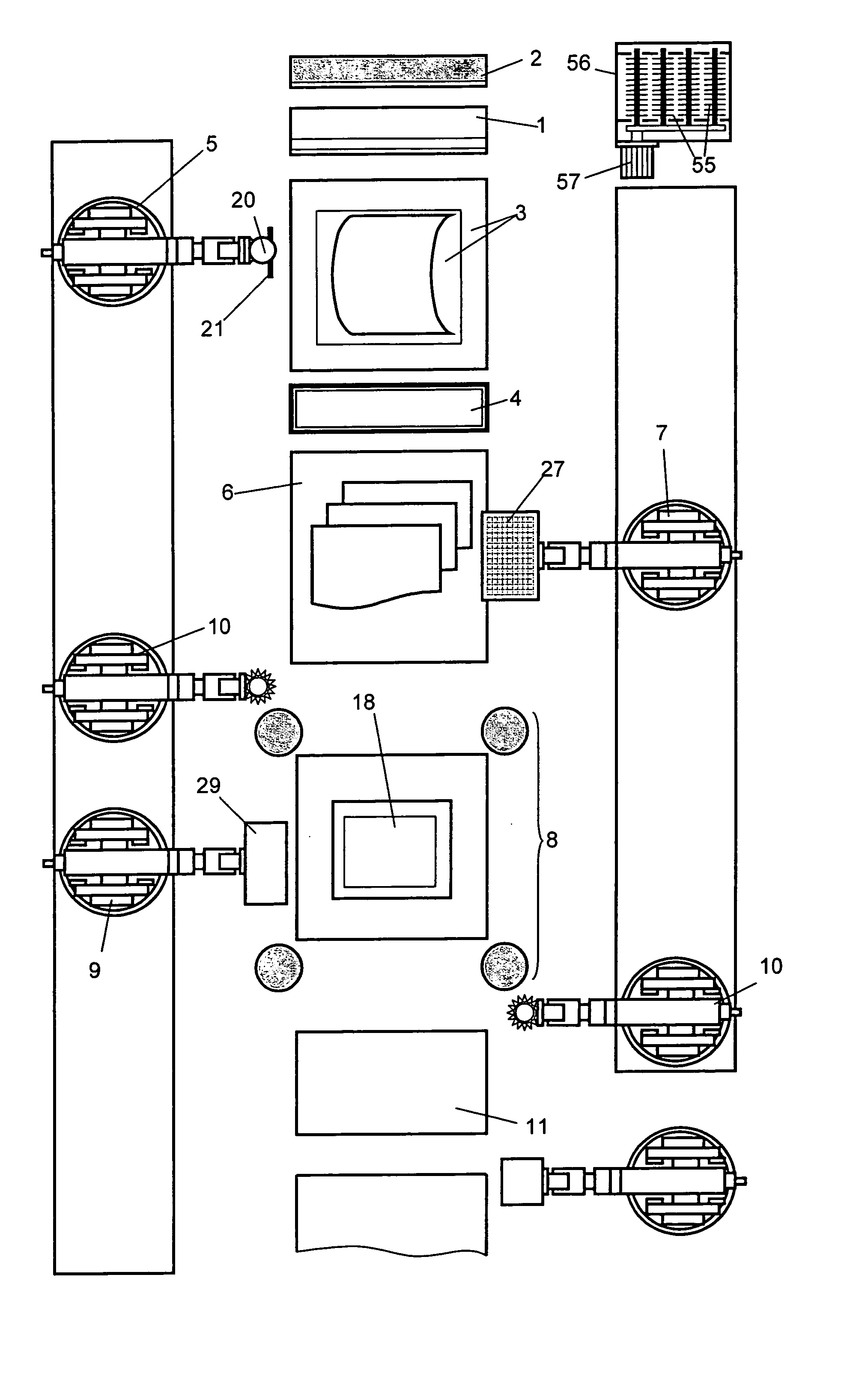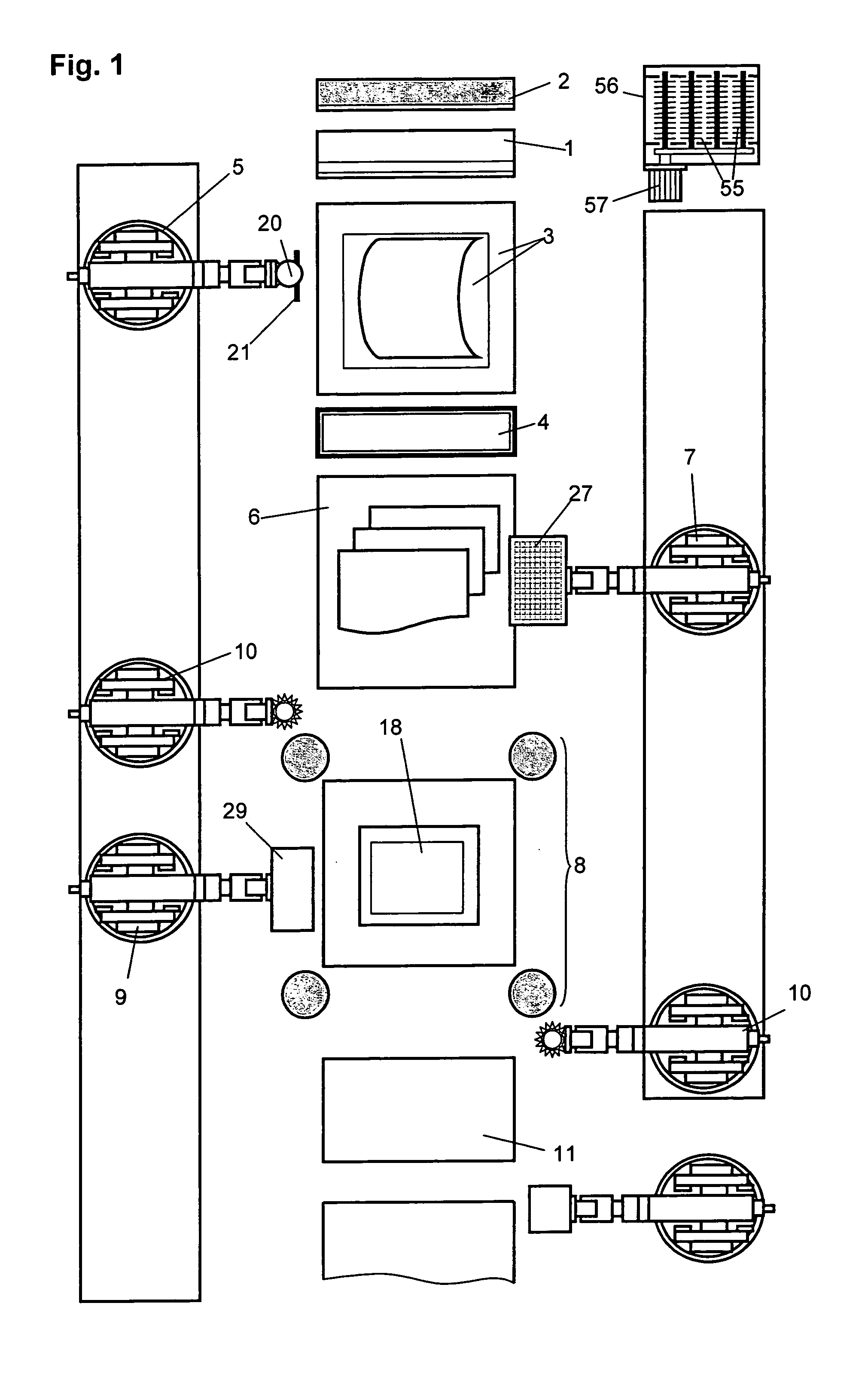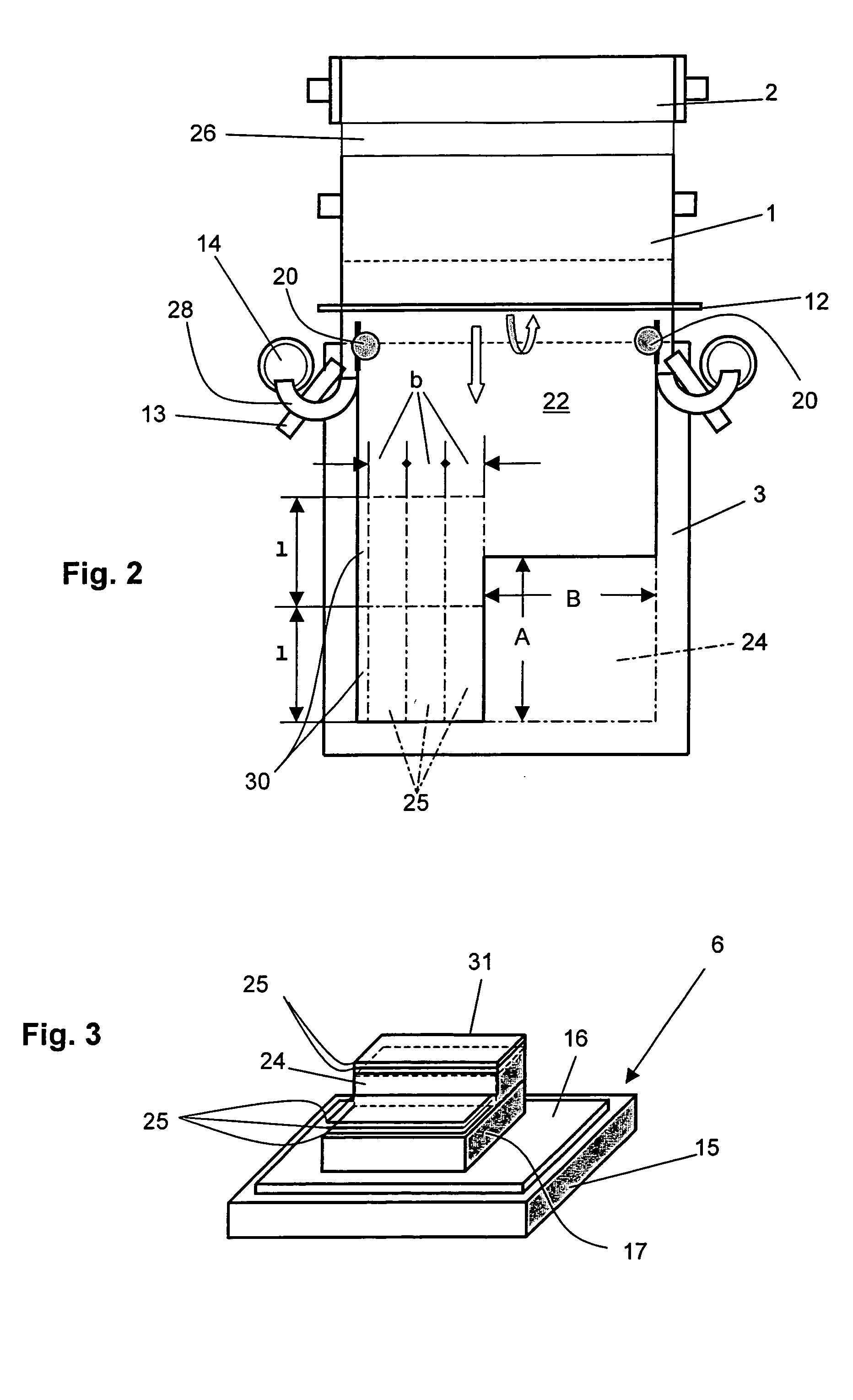Method and device for the automated handling of resin-impregnated mats during the production of smc parts
- Summary
- Abstract
- Description
- Claims
- Application Information
AI Technical Summary
Benefits of technology
Problems solved by technology
Method used
Image
Examples
Example
DETAILED DESCRIPTION OF THE DRAWINGS
[0035] The method according to the invention which it proceeds for producing series of SMC is explained briefly on the basis of the diagram of the method according to FIGS. 1 and 2. The SMC components are produced from fibrous, reactive resin mass which is provided in the form of a virtually endless web 22 of resin-impregnated mats wound up into a supply roll 1 as the initial product. To maintain the reactivity of the synthetic resin in the web of resin-impregnated mats 22, the latter is covered with a protective film 26, which is pulled off and rolled up to form a separate roll 2 only shortly before the processing of the resin-impregnated mat. As can be seen more clearly in FIG. 2, the protective film is deflected counter to the processing direction of the resin-impregnated mat to the roll 2 via a reversing rod 12 located in the vicinity of the cutting table 3. The side edges of the web of resin-impregnated mats are unsuitable for further proces...
PUM
| Property | Measurement | Unit |
|---|---|---|
| Fraction | aaaaa | aaaaa |
| Fraction | aaaaa | aaaaa |
| Fraction | aaaaa | aaaaa |
Abstract
Description
Claims
Application Information
 Login to View More
Login to View More - R&D
- Intellectual Property
- Life Sciences
- Materials
- Tech Scout
- Unparalleled Data Quality
- Higher Quality Content
- 60% Fewer Hallucinations
Browse by: Latest US Patents, China's latest patents, Technical Efficacy Thesaurus, Application Domain, Technology Topic, Popular Technical Reports.
© 2025 PatSnap. All rights reserved.Legal|Privacy policy|Modern Slavery Act Transparency Statement|Sitemap|About US| Contact US: help@patsnap.com



